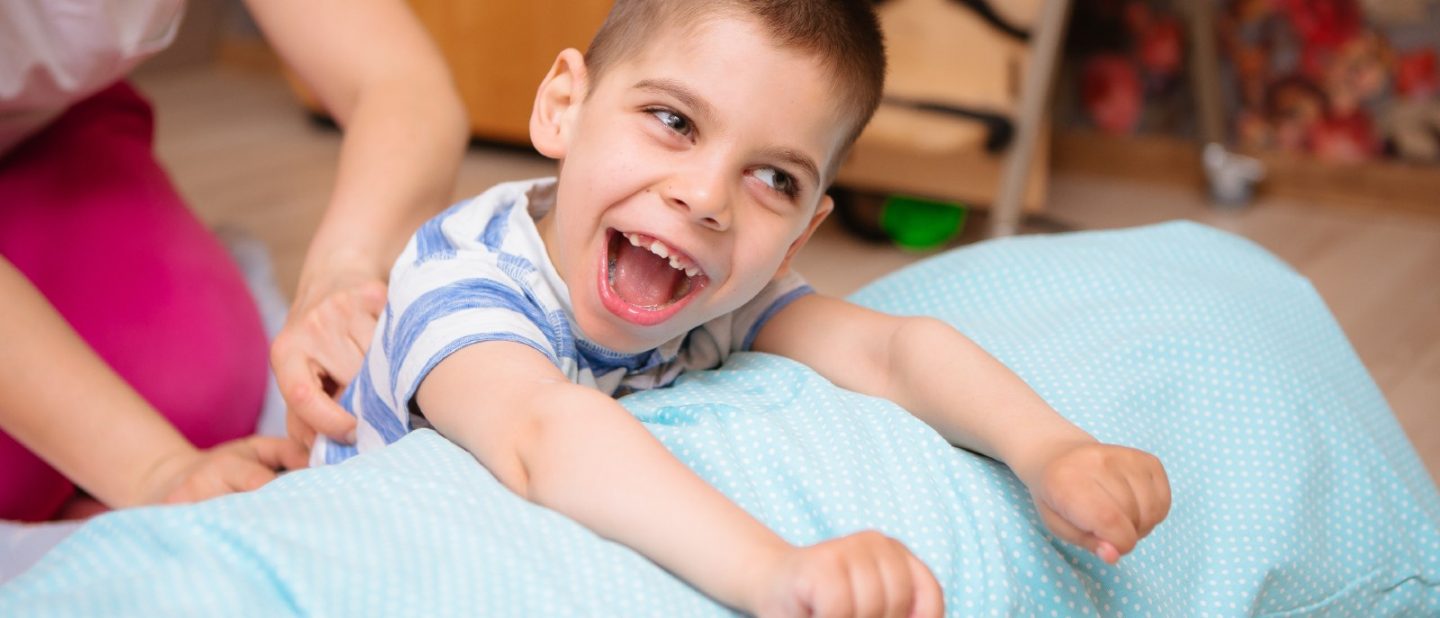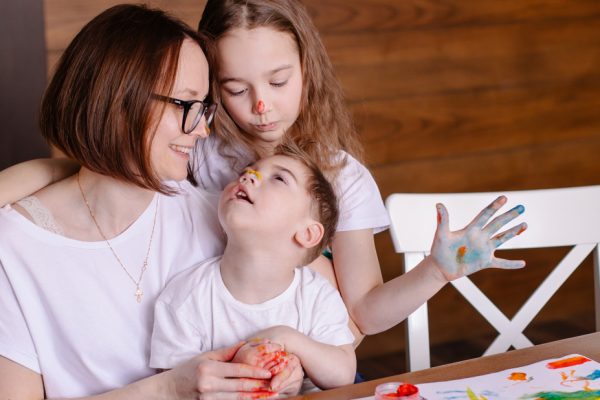
Cerebral palsy 101: what parents need to know
Every 20 hours an Australian child is born with cerebral palsy
If your child is diagnosed with cerebral palsy or a diagnosis looks likely, it’s important for you to know that although the condition is lifelong, there are many therapies and interventions to look into to manage the symptoms and help your child develop.
There are approximately 34,000 people living with cerebral palsy in Australia and everyone will have their own experience of how the diagnosis affects them. There are some basic things to know, however, about a CP diagnosis and with the help of Cerebral Palsy Alliance we’ve put together an overview of the condition:
What is cerebral palsy?
Cerebral palsy is an umbrella term for a broad group of movement disorders that affect movement and posture due to damage to the developing brain. While it is a life-long physical disability, the way it presents in your child can change over time.
There is no single cause of cerebral palsy and for most babies the exact cause may never be known. The brain injury leading to cerebral palsy occurs either during pregnancy or before 1 month of age. After 1 month of age, stroke is the most common cause in babies who acquire cerebral palsy. If your child has a stroke, it may occur spontaneously or arise from surgical or heart complications.
How may cerebral palsy affect my child?
Each person with cerebral palsy is unique. While one child might have weakness in one hand and find tasks like writing or tying shoelaces challenging, others may have difficulty walking or with other gross motor skills. Some people find one side of the body is affected much more than the other, and some find their legs are much more affected than their arms.
You may find that your child is only very mildly affected on one side while some children may have little or no control over their movements or speech and need assistance day and night.
People with severe cerebral palsy may also have difficulties with swallowing, breathing and eating.
Types of cerebral palsy
QUADRIPLEGIA
All four limbs (arms and legs) are affected. The muscles of the trunk, face and mouth are often also affected.
DIPLEGIA
(A form of bilateral cerebral palsy) Both legs are affected. The arms may be affected to a lesser extent.
HEMIPLEGIA
(A form of unilateral cerebral palsy) One side of the body (one arm and one leg on the same side) is affected.
Other classifications:
SPASTIC CEREBRAL PALSY
Spastic cerebral palsy is the most common type of cerebral palsy. The muscles of people with spastic cerebral palsy feel stiff and their movements may look stiff and jerky. Spasticity is a form of hypertonia, or increased muscle tone. This results in stiff muscles which can make movement difficult or even impossible.
DYSKINETIC CEREBRAL PALSY
People with dyskinetic cerebral palsy have variable movement that is involuntary (outside of their control). These involuntary movements are especially noticeable when a person attempts to move. Dyskinetic movements often co-occur alongside spasticity.
Dyskinetic movements can be: Twisting and repetitive movements – known as dystonia * Slow, ‘stormy’ movements – known as athetosis * Dance-like irregular, unpredictable movements – known as chorea.
ATAXIC CEREBRAL PALSY
This is the least common form of CP. Ataxia means ‘without order’ or ‘incoordination’.
Ataxic movements are characterised by clumsiness, imprecision, or instability. Movements are not smooth and may appear disorganised or jerky. The incoordination seen with ataxia occurs when a person attempts to perform voluntary movements such as walking or picking up objects.
A person can also have a mix of the above types of cerebral palsy.
What to watch out for
Not all signs of cerebral palsy are visible at birth; you may notice that some symptoms become more apparent as your child develops, or perhaps they may start missing some developmental milestones. Always talk to your GP, paediatrician or other primary care provider if you have any concerns.
Babies
Babies with cerebral palsy might:
• Feel floppy when picked up
• Not be able to hold their head up
• Have muscles that feel stiff
• Be slow to develop developmental milestones
• Have feeding or swallowing difficulties • Prefer to use one side of their body
• Not make many sounds
• Not take much notice of you.
Children
Physical development can be delayed, with children:
• Not walking by 12–18 months
• Not saying words or making simple sentences by 24 months
• Having speech that is hard to understand
• Having trouble eating or drinking certain types of foods
The path to diagnosis
Cerebral palsy is a complex disability, and you may not receive a diagnosis immediately.
Doctors may suspect cerebral palsy if your baby has slow or delayed motor development, has tight or floppy muscle tone, or displays unusual postures.
The time varies when parents are given an official diagnosis. Very premature babies are usually watched carefully and may have an early MRI scan (magnetic resonance imaging). However, most children with cerebral palsy are not born prematurely. Most are born at full term and it is not until they do not meet the usual infant milestones that any form of disability is considered.
A MRI might show that your child has an injury to the brain, but at this early stage it is often too soon to predict the impact.
Your child may undergo a General Movements Assessment which can be conducted from birth until 5 months of age. It is a strong predictor of cerebral palsy, particularly when certain changes to the brain are seen on an MRI. The non-invasive assessment takes around 3-5 minutes and is used to identify any absent or abnormal general movements your child may have.
A General Movements Assessment cannot predict the severity of cerebral palsy, but it can suggest that a baby is ‘at risk of cerebral palsy’, and intervention can then start as early as possible. This period of initial diagnosis can be a frustrating and worrying time for you as a parent, but your child (and you!) will have a team of experts around them during this time. Ideally, children with cerebral palsy, or those identified ‘at risk of cerebral palsy’ will be cared for by a multidisciplinary team that could include:
• A GP
• Specialists such as a paediatrician, a neurologist, a surgeon or others
• An occupational therapist who can help your child with self-care tasks such as dressing or eating independently, and assist with developing play and fine motor skills
• A physiotherapist to help with skills such as crawling and walking, and can also assist with issues like poor balance and muscle weakness
• A speech pathologist who helps with feeding, language development and can treat speech problems
• A child psychologist, who can monitor overall development and manage behavioural or emotional problems
• An audiologist, who can assess and advise on your child’s hearing
• A special education teacher, who can help deliver an early intervention program and support your child in pre- school and school.
The multidisciplinary team will talk about your child’s strengths and weaknesses and will work with you to develop a plan for support going forward. This is likely to include:
• Working out who is your first point of contact
• Setting up a plan for regular assessments to check on progress
• Some early intervention services help with parent coaching.
Early Intervention and your child
Early intervention is essential to improving outcomes for young children and babies. Babies and children diagnosed with cerebral palsy or deemed to be at high risk of cerebral palsy, will be referred to a multidisciplinary team that includes occupational therapists, physiotherapists, speech pathologists, social workers, early intervention teachers and psychologists. Depending on your child’s individual needs, any member of this therapy team may be involved with supporting you and your child.
Brain development continues after birth and is driven by motor cortex activity. This means the first two years of your baby’s life are critical for cognitive and motor development, as their brain is undergoing constant spontaneous changes. This ability for the brain to change itself is called neuroplasticity and babies and children who receive cerebral palsy-specific early intervention will benefit from vital learning opportunities during this critical window.
Information provided by Cerebral Palsy Alliance. CPA helps babies, children, teenagers and adults living with cerebral palsy and similar conditions lead the most comfortable, independent and inclusive lives possible. To find out more about their services visit cerebralpalsy.org.au






